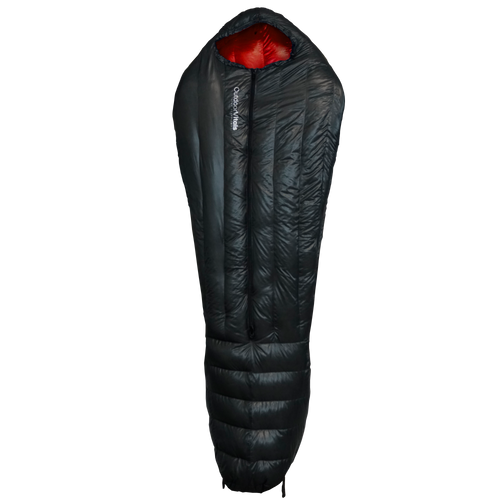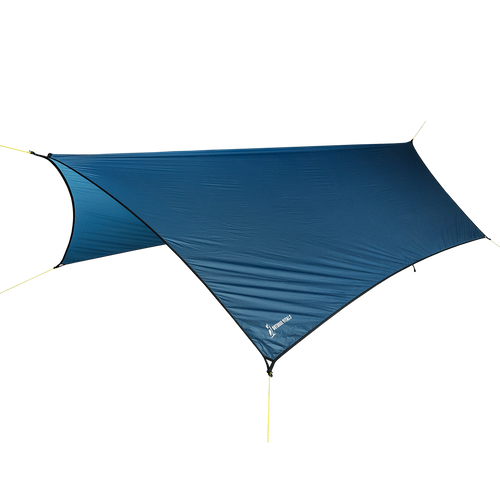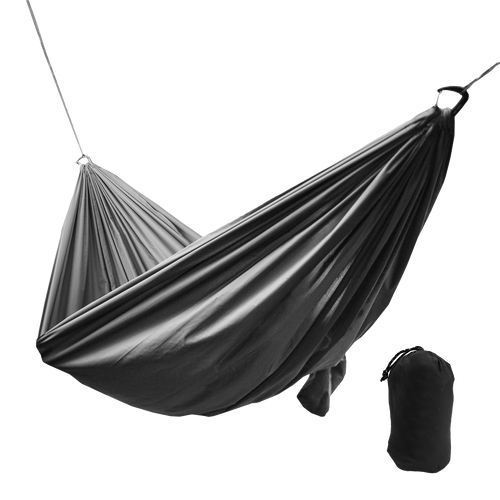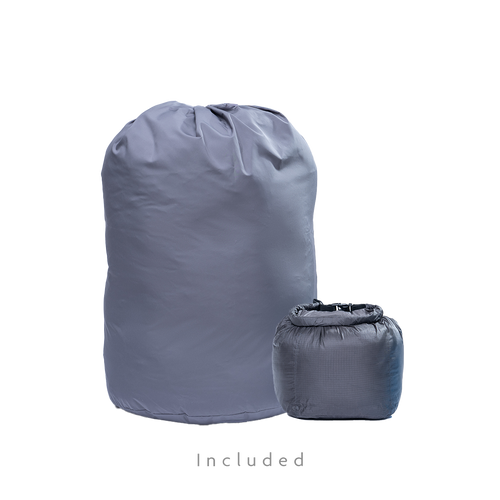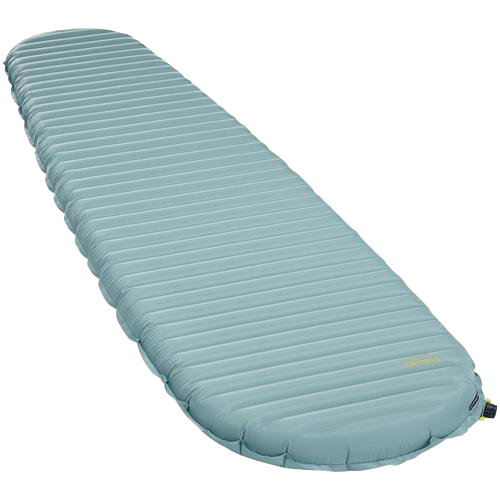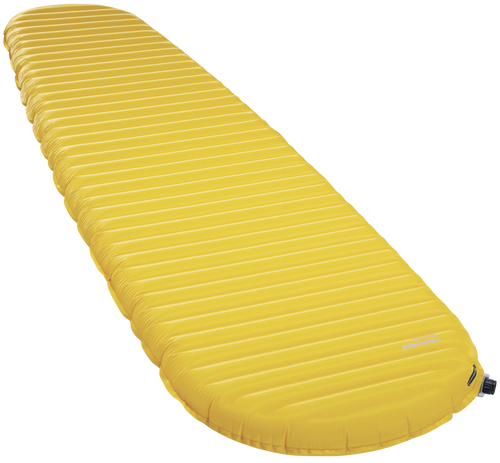Guide to Hiking The Grand Canyon Rim to Rim (4 Things You MUST Know)
There's a reason the Grand Canyon is listed as one of the wonders of the world.
The majestic views, incredible landscape, & overall size are unmatched!
But there are also many potential dangers to be aware of, both hidden & visible - ESPECIALLY if you're planning to hike the Grand Canyon from Rim to Rim. While the canyon is well worth visiting, you'll want to make sure you understand these 4 things BEFORE you attempt to cross it.
Our Experience
Recently we decided to fastpack through the Grand Canyon, going from Rim to Rim to Rim. Not only did we go from the South Rim to the North Rim and back, but we did it in a day and a half while carrying all of our food, water, & gear to sleep down at the bottom.
You can follow the adventure by watching the Full Documentary below:
This epic double crossing pushed us to our limits & really made 4 things stand out that anyone should know before attempting to hike in the Grand Canyon. Even if you're not planning on visiting the canyon anytime soon, this guide is still useful for anyone planning on high-exertion or desert hiking.
1. Know the Trail Conditions
Weather
Usually when you plan a trip somewhere, it's pretty easy to pull up the weather on your phone for a location, and move on. But in the Grand Canyon, you've got to know weather for multiple different areas where you'll be hiking. There are MASSIVE temperature swings between weather on top of the rims and areas down in the canyon itself. You could start out on top in the morning and feel very cold, & in the same day get to the bottom and face problems with extreme heat. You've got to be prepared to face both of these conditions safely!
Not only do you have to check weather for the different locations in the canyon you'll be visiting, but you need to check for the specific time of day you plan on being in each of those locations. The temperature swings aren't just caused by elevation. One area could experience mild temperatures in the morning, and significant heat just a few hours later.
So do your forecasting homework!
Water
Did you know that the pipe system that runs through the canyon is over 100 years old?
Keep that in mind as you plan on how much water to carry with you. Along the descent into the canyon (from either Rim) there are water stops that sometimes have drinkable water available from a spigot. But the water situation can get confusing, since piped water can be turned on or off during certain times of year, & sometimes those old pipes just break!
When you get into the National Park, check with a ranger to know what water is turned on or available. If you call ahead, sometimes they don't know what water will be turned on or off at the time of your trip.
A good way to cover your bases is to ensure you bring extra containers to carry more water in case a water source you had planned on ends up not being available.
2. Understand the Cost of Elevation
Flat miles & sloped miles are NOT the same.
It's really important to understand the effect that elevation will have on you physically. Different muscles will be used. There will be differences in how thin the air is.
Not only that, but some of the trails are full of step-ups & ledges, which make it even harder to go up or down. Just because you can walk 20 miles in a day in the city doesn't mean you'll be able to do it in the Grand Canyon.
We really can't stress this enough.
You MUST understand your own physical abilities before attempting to hike the Grand Canyon if you want to have an enjoyable experience.
One recommendation is to get a good understanding of how long it might take you to ascend 1000 feet in elevation. Then you can take that understanding and use it to plan/schedule your time in the canyon.
3. Train in the Right Ways
It's not enough to just show up and try to complete this hike without any training, especially if you're planning to go Rim to Rim to Rim. You should be training your body multiple months in advance.
Now if you are going to run from Rim to Rim in a day (as many do) or do fastpacking overnight like we did, it's likely that you'll even need to train for longer than 6 months before the trip!
Why?
If you only leave yourself a couple of months to train for something this strenuous, you'll be prone to injury or overtraining. You won't have the physical baseline that you need to pull something off like Rim to Rim to Rim.
So what type of training do you need?
We don't mean just doing a few squats at the gym. We also don't mean just going for walks around your neighborhood regularly. What you need is to train in areas where you can climb & descend in elevation. That's the majority of what the Grand Canyon is: climbing & descending - so that's what you need to practice! Make sure you don't skip the descending part, because that actually puts more strain on your body than climbing.
Remember that in the Grand Canyon you will have some form of extra weight on your body from carrying at least food and water. This will have an additional toll on your body, so it's best to train with that same weight as well.
That's why we focus so heavily on ultralight performance & versatility in all the gear we brought with us when we fastpacked the canyon. To see a gear list of exactly what we brought, just watch the video below:
Training in the right way also heavily involves nutrition & hydration. This leads directly into Tip #4 for preparing for the Grand Canyon.
4. Know How To Hydrate
We don't mean just simply that you need to hydrate, but you need to know specifically how. That is absolutely critical in the conditions you'll find in the Grand Canyon.
You already know water is important while trying to do Rim to Rim. However, many of you are probably trying to calculate how much water you'll need based off of mileage. You might think, "Ok, I've got 5 miles to go here so I just need to carry a liter or two." You're thinking in terms of mileage.
What you need to change is to think in terms of hours. "How many hours will it take for me to cover these 5 miles? Am I hiking up the North Rim, which will significant slow my speed down?" You need to think about how much water you'll need over hours of time. Remember, you'll be exerting yourself & during certain stretches you'll face some pretty brutal heat.
Now, you many not know how much water you consume per hour. Below is a video where we'll show you how to calculate that:
If you're only drinking when you're thirsty, you are going to get behind in hydration quickly, & it's going to become a BIG problem for you.
It's also important to note that you can't just drink plain water. As you sweat you are not only losing a lot of water from your body, but also electrolytes that need replenished too. You need electrolytes, and you need carbohydrates or fuel to help your body absorb those electrolytes.
Make sure you bring MORE than enough electrolytes; it's very possible you'll use more than expected. Two ways to tell that you need to take more electrolytes is 1.) if you are starting to cramp up, or 2.) if water is passing through you very, very quickly. If either of those scenarios is happening, consider loading up on more electrolyte mixes or salts.
If you're one of our Live Ultralight Members, there are some great hydration & recovery mixes we recommend by Skratch Labs & Honey Stinger, & you can get them at a discount! These are mixes we use ourselves & have tested extensively.
BONUS TIP: Bring Cash For Phantom Ranch Store
Some of you may know this, but 7 or 8 miles down into the canyon from the South Rim (taking the Kaibab Trail), there's a little store at Phantom Ranch. You can buy some nice, cold lemonade there! The only caveat is that they only take cash. On a hot, dusty day in the canyon, that lemonade is sure worth a lot!
So there you have it! Those are the 4 most important things you need to know BEFORE hiking Rim to Rim in the Grand Canyon. If you follow these tips, it will significantly improve your experience while visiting this world wonder!
Thanks for reading! If you feel like we left something out, go ahead and leave it in the comments below. Or to view more about these 4 tips, watch the video below:
5 comments
Responding to Marty’s comment – the critters there are a little ruthless and would have chewed thru their packs if they dropped them at Phantom. A ranger is always passing thru each day as well and may see it as discarded or forgotten items. I’d want my pack since it carries all my essentials in case there’s an emergency. Going down there again next week! :)
I’m glad to hear that you had a good experience doing a R2R2R in Grand Canyon, that’s a great accomplishment! I do a lot of hiking and backpacking in the canyon and I’m volunteering on the North Rim with NPS this season as an Interp ranger.
A few updates to help when planning for GC backpacking & hiking. First, start early – you only need a permit if you are camping overnight below the rim and most often the permits need to be obtained 4-5 months in advance. Second, check here for trail conditions and water availability – https://www.nps.gov/grca/planyourvisit/trail-closures.htm
Third – Phantom Ranch takes credit & debit cards as long as their wifi is working and it usually does.
Forth – there’s a good tool developed by Bright Angel Outfitters to use when planning hiking trips into the canyon called the Shade Tracker that you can access here: https://brightangeloutfitters.com/blogs/news
Enjoy your Grand Canyon adventures!
I’m glad to hear that you had a good experience doing a R2R2R in Grand Canyon, that’s a great accomplishment! I do a lot of hiking and backpacking in the canyon and I’m volunteering on the North Rim with NPS this season as an Interp ranger.
A few updates to help when planning for GC backpacking & hiking. First, start early – you only need a permit if you are camping overnight below the rim and most often the permits need to be obtained 4-5 months in advance. Second, check here for trail conditions and water availability – https://www.nps.gov/grca/planyourvisit/trail-closures.htm
Third – Phantom Ranch takes credit & debit cards as long as their wifi is working and it usually does.
Forth – there’s a good tool developed by Bright Angel Outfitters to use when planning hiking trips into the canyon called the Shade Tracker that you can access here: https://brightangeloutfitters.com/blogs/news
Enjoy your Grand Canyon adventures!
I’m glad to hear that you had a good experience doing a R2R2R in Grand Canyon, that’s a great accomplishment! I do a lot of hiking and backpacking in the canyon and I’m volunteering on the North Rim with NPS this season as an Interp ranger.
A few updates to help when planning for GC backpacking & hiking. First, start early – you only need a permit if you are camping overnight below the rim and most often the permits need to be obtained 4-5 months in advance. Second, check here for trail conditions and water availability – https://www.nps.gov/grca/planyourvisit/trail-closures.htm
Third – Phantom Ranch takes credit & debit cards as long as their wifi is working and it usually does.
Forth – there’s a good tool developed by Bright Angel Outfitters to use when planning hiking trips into the canyon called the Shade Tracker that you can access here: https://brightangeloutfitters.com/blogs/news
Enjoy your Grand Canyon adventures!
I’m surprised that you guys didn’t drop your gear at Phantom and slack pack to the north rim. Anyway I’m familiar with that hike but your pictures are still way better than mine. Great job!
m

